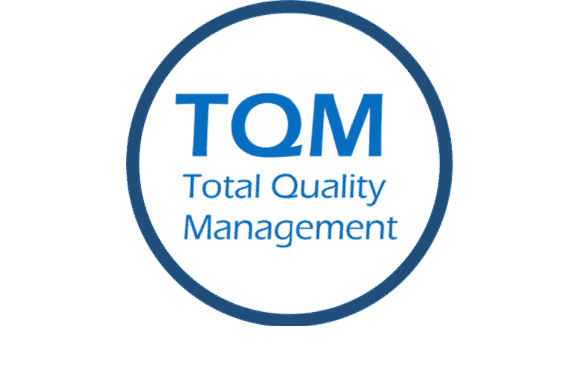It is difficult to guarantee and improve product quality only by relying on quality inspection and using statistical methods. It is also inappropriate to completely entrust the quality function to quality control engineers and technicians. Therefore, since the 1950s, many enterprises have begun the practice of total quality management. What is Total Quality Management and how is it done? There are some essential elements and principles of TQM implementation.

What is Total Quality Management?
Total Quality Management (TQM) is a management approach that takes quality as the center and all staff participation as the basis and aims to achieve long-term success by making customers satisfied and benefiting the owners, employees, suppliers, partners, or society of the organization.
Features of Total Quality Management:
- Total quality management is a way to manage an organization.
- It is comprehensive and controls all links and stages of product quality.
- It is the quality management of the whole process.
- It is quality management with full participation.
- It is quality management with the participation of the whole society.
Four Stages of Total Quality Management:
- Plan: The main task of this stage is to find out users’ requirements for product quality and determine quality policies, quality objectives, and quality plans through market research, user visits, national plan instructions, etc.
- Do: This stage is to implement the contents specified in phase P, such as product design, trial production, and test according to quality standards, including personnel training before plan implementation.
- Check: This stage is mainly used to check whether the implementation is in line with the expected results of the plan during or after the implementation of the plan.
- Action: Corresponding measures shall be taken mainly according to the inspection results.
8 Elements & Principles of Total Quality Management
- Customer focus: the customer ultimately determines the quality level. No matter what measures the organization takes to promote quality improvement (training employees, integrating quality into the design process, or upgrading computers or software), the customer can determine whether these efforts are worth it.
- Total employee participation: all employees strive to achieve common goals. Only when fear is dispersed from the workplace, authorization has taken place and management has provided an appropriate environment can we obtain all the commitments of employees. A high-performance working system combines continuous improvement with normal business operation. Self-managed work teams are a form of empowerment.
- Process-centered: the basic part of TQM focuses on process thinking. The process is a series of steps to obtain input from suppliers (internal or external) and convert it into output delivered to customers (internal or external). Defines the steps required to perform the process and continuously monitors performance metrics to detect unexpected changes.
- Integrated system: Although the organization may be composed of many different functional disciplines usually organized as vertical departments, the horizontal process connecting these functions is the focus of TQM. Small processes add up to greater process integration, and all processes are aggregated into the business processes needed to define and implement policies. Everyone must understand the organization’s vision, mission, and guiding principles, as well as quality policies, objectives, and key processes. Business performance must be continuously monitored and communicated. We can model integrated business systems according to Baldrige Award standards and/or combined ISO 9000 standards. Every organization has a unique work culture. Unless a high-quality culture is cultivated, it is almost impossible to achieve excellence in its products and services. Therefore, an integrated system connects business improvement elements in an attempt to continuously improve and exceed the expectations of customers, employees, and other stakeholders.
- Strategic and systematic approach: the key part of quality management is the strategic and systematic approach to achieve the vision, mission, and objectives of the organization. This process is called strategic planning or strategic management, including the development of a strategic plan with quality as a core component.
- Continuous improvement: a large part of TQM is continuous process improvement. Continuous improvement enables organizations to be both analytical and creative when looking for ways to improve competitiveness and more effectively meet the expectations of stakeholders.
- Fact-based decision-making: in order to understand the organization’s performance, data on performance indicator KPIs is required. TQM requires organizations to continuously collect and analyze data to improve decision accuracy, reach consensus, and allow prediction based on past history.
- Communication: during organizational change and as part of daily operation, effective communication plays a great role in maintaining morale and motivating employees at all levels. Communication involves strategy, method, and timeliness.